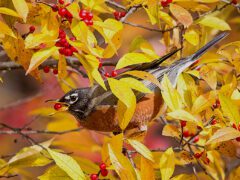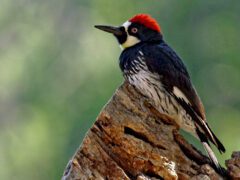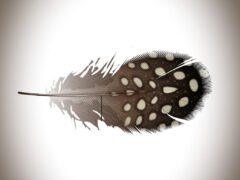The Four Keys to ID
- Size & Shape
A medium-sized shorebird with a plump belly but elegant appearance because of its long legs, long, rather slim neck, and long, slightly decurved bill. In flight, note the long narrow wings and feet projecting well past the tail tip.
Relative Size
Larger than a Sanderling, smaller than a Lesser Yellowlegs; similar in size to a Dunlin or Pectoral Sandpiper, but more elegant, with longer legs.

 robin-sized
robin-sizedMeasurements
- Both Sexes
- Length: 7.9-9.1 in (20-23 cm)
- Weight: 1.8-2.5 oz (50-70 g)
© Doug Hitchcox / Macaulay Library
- Color Pattern
Adults in breeding plumage are mottled dark brown above, neatly banded dark brown and white below. The head pattern features a chestnut cheek and crown, a pale line above the eye, and a dark line in front of the eye. Legs are greenish yellow. Nonbreeding adults are pale gray above, whitish below, with a dusky gray breast and whitish line above the eye. Juveniles are darker above than nonbreeding adults, and more scaly looking because of neat pale edges to dark feathers.
© Ian Davies / Macaulay Library - Behavior
Forages in freshwater habitats by probing rhythmically into soft mud for invertebrates, often walking slowly while probing, much like a dowitcher. Often rests and forages in flocks, frequently mixed with dowitchers and yellowlegs.
- Habitat
Nests in moist or dry tundra; migrants and wintering birds use freshwater wetlands almost exclusively, including rainwater pools, marshes, ponds, wet agricultural fields, flooded pastures, and impoundments.
© Ryan Schain / Macaulay Library










































